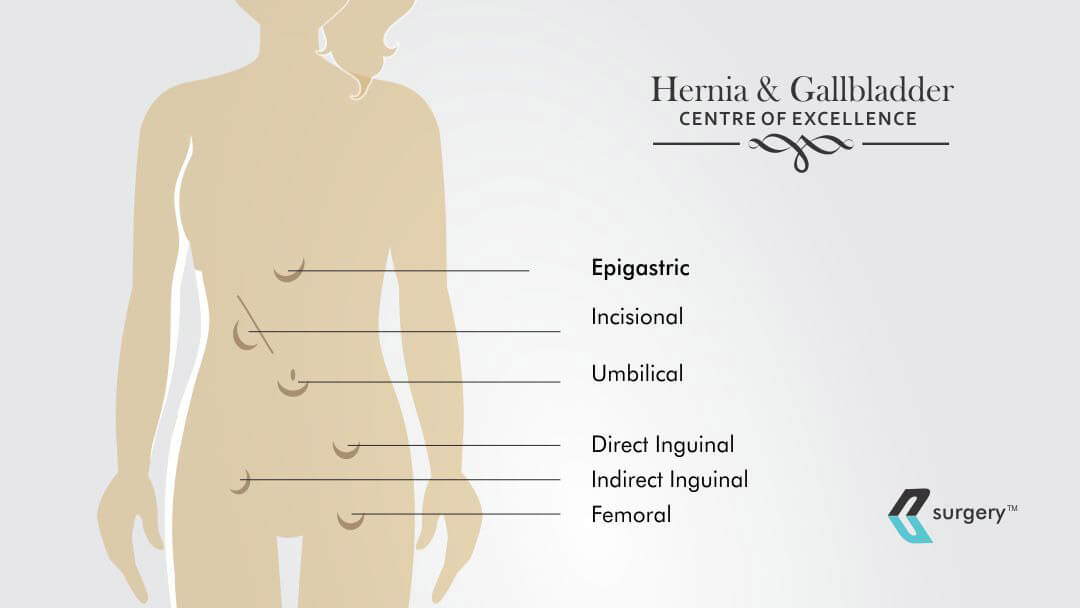
Types of Hernias
There are a many types of hernias but the most common include inguinal hernia, hiatal hernia, incisional hernia and umbilical hernia. Below is a description of each
Inguinal Hernia
An inguinal hernia forms when the intestines push through an opening in the lower abdomen, particularly in the inguinal canal. Inguinal hernia represent the majority of all types of diagnosed hernia and it occurs more often with men.
Incisional hernia
Incisional hernia happens after a surgery procedure weakens the surrounding muscle or tissue areas at the site of surgical incisions. Usually around a few months after surgery.
Hiatal Hernia
A hiatal hernia forms when the intestine breaks through the diaphragm into the chest cavity. The diaphragm is a stretch of muscle that allows us to breath and separates the abdomen and the chest. Hiatal hernias are more common in older patients.
Umbilical Hernia
Umbilical hernia mostly affects children who are under 6 months old and is the only type that could go away without surgery since the abdominal muscles get stronger with age. You may notice a lump around the navel when your baby is crying. If umbilical hernia does not disappear even after the child is a year old, it may require surgical procedure.
Epigastric Hernia
An epigastric hernia is present in the upper area of the abdomen (tummy area) between the ribs. and belly button. This hernia is common in both children and adults and can be present at birth
Femoral Hernia
A femoral hernia also known as femorocele will appear in the femoral canal which is an area between the groin and upper thigh area as a bulge on the skin. Femoral hernias are not common but mostly affect women. Femoral hernias can lead to problems where the hermia affects blood flow to your intestines and will require medical attention

